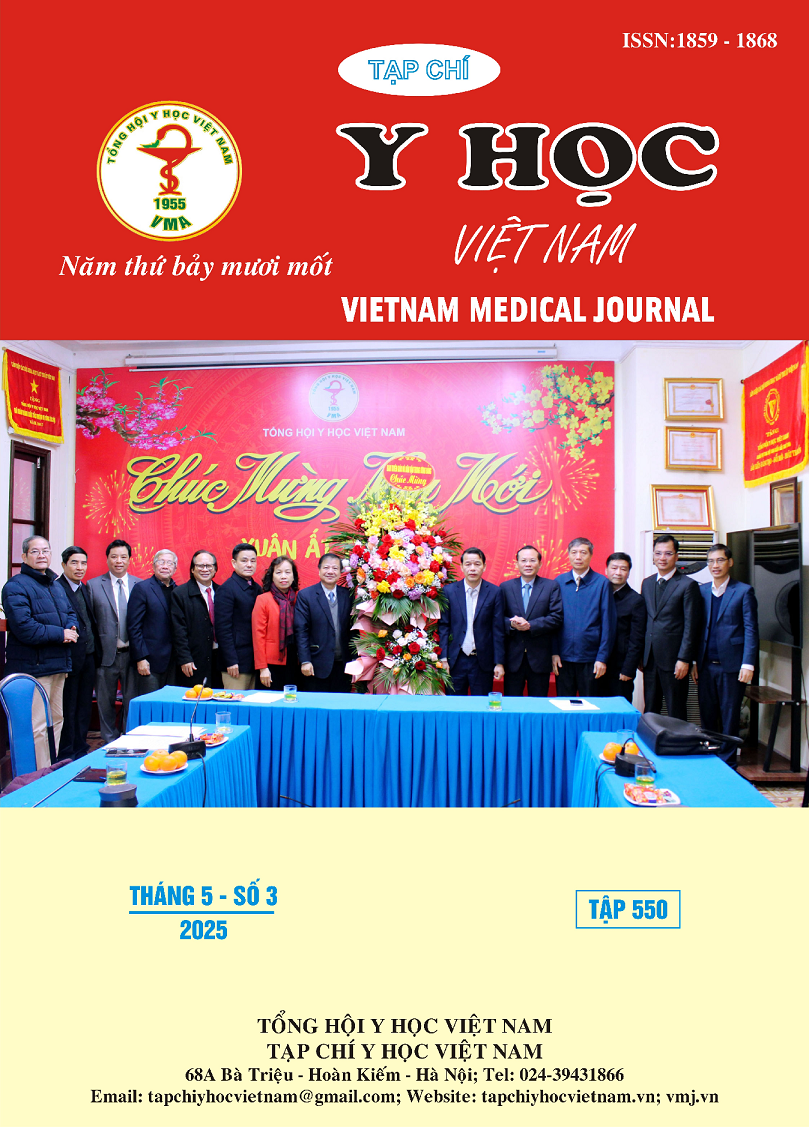EVALUATION OF DIABETIC FOOT ULCERS AND THE ROLE OF SERUM FRUCTOSAMINE IN TREATMENT MONITORING IN TYPE 2 DIABETES PATIENTS
Main Article Content
Abstract
Objective: To determine the prevalence and certain characteristics of diabetic foot ulcers and to evaluate the value of serum fructosamine levels in monitoring the treatment of foot ulcers in patients with type 2 diabetes mellitus at An Giang Central General Hospital during 2024–2025. Subjects and Methods: This was a cross-sectional descriptive study with analytical components conducted on 310 patients diagnosed with type 2 diabetes mellitus, hospitalized for treatment at the Endocrinology Department of An Giang Central General Hospital. Data collection included medical history, classification and status of foot ulcers, and serum fructosamine levels. Results: The prevalence of foot ulcers was 15.8%. The most common ulcer characteristics among study participants were yellow (34.7%) and red (32.7%) ulcer bases, purulent discharge (36.7%), and yellow discharge (32.7%). Most ulcers had a depth classified as Grade 2 (51.0%), with 40.8% located at the toes, and 59.2% had an ulcer area greater than 5 cm². Pre-treatment fructosamine levels showed a moderate positive correlation with fasting plasma glucose (Pearson’s r = 0.545, p < 0.001) and a strong positive correlation with pre-treatment HbA1c (Pearson’s r = 0.619, p < 0.001). Conclusion: Grade 2 foot ulcers based on the Wagner–Meggitt classification were the most prevalent (48.98%), and Grade 3 infections according to the IDSA criteria were most common (57.1%). Monitoring serum fructosamine levels during inpatient treatment may be useful for evaluating short-term glycemic control when HbA1c is not suitable for such assessment.
Article Details
Keywords
Type 2 diabetes, foot ulcers, fructosamine concentration
References
2. Nicolaas C. Schaper. IWGDF Guidelines on the Prevention and Management of Diabetes – related Foot disease. World Diabetic Foot Working Group (IWGDF). 2019.
3. Bộ Y tế. Quyết định số 1530/QĐ-BYT ngày 24 tháng 3 năm 2023 Về việc ban hành tài liệu chuyên môn “Hướng dẫn chẩn đoán và điều trị loét bàn chân do Đái tháo đường”. 2023.
4. A. Armbruster. Fructosamine: structure, analysis, and clinical usefulness. Clinical Chemistry. 33 (12), pp. 2153 - 2163. 1987.
5. Trương Tuấn Khải. Nồng độ glucose huyết tương lúc đói, fructosamin huyết tương và HbA1C trên bệnh nhân đái thái đường típ 2 tại bệnh viện Trường Đại học Y dược Cần Thơ năm 2021-2022. Tạp chí Y dược học Cần Thơ. 51. 89-95. 2022.
6. Lê Bá Ngọc. Nghiên cứu đặc điểm loét bàn chân và kết quả điều trị giảm tải loét gan bàn chân ở bệnh nhân đái tháo đường. Luận án Tiến sĩ. Trường Đại học Y Hà Nội. 2018.
7. Lường Trọng Bách. Khảo sát giá trị của fructosamine huyết thanh trong theo dõi điều trị bệnh nhân ĐTĐ typ 2 cao tuổi tại Bệnh viện Hữu Nghị. Tạp chí Y học Việt Nam. 507 (2). 69-73. 2021.
8. Đào Thị Thúy. Giá trị xét nghiệm fructosamin huyết thanh trong phản ánh đường huyết lúc đói ở bệnh nhân đái tháo đường có bệnh thận mạn. Tạp chí Y học Việt Nam. 504 (2). 112-116. 2021.
9. Lê Thị Hương Thu. Nồng độ fructosamin huyết thanh trong đánh giá mức độ kiểm soát đường máu ở bệnh nhân đái tháo đường típ 2 điều trị ngoại trú tại Bệnh viện Trung ương Thái Nguyên. Luận văn tốt nghiệp bác sĩ nội trú. Trường Đại học Y – Dược Thái Nguyên. 2016.


